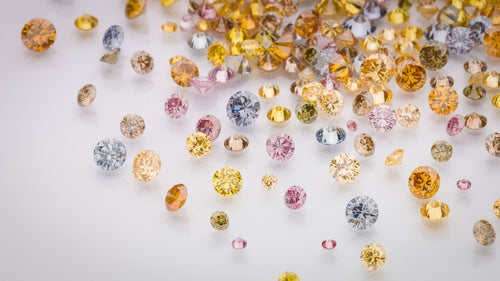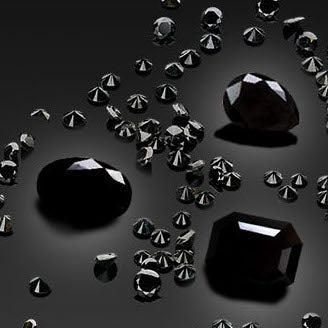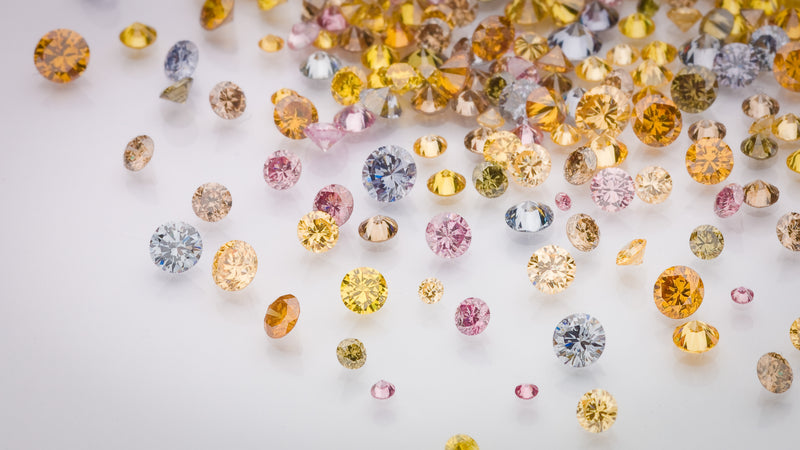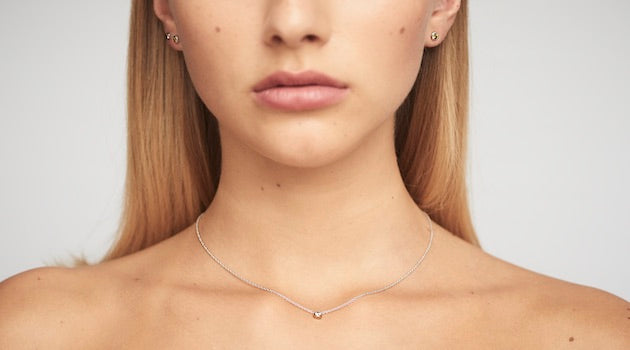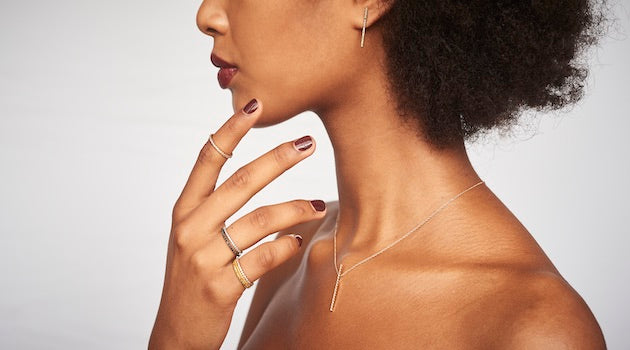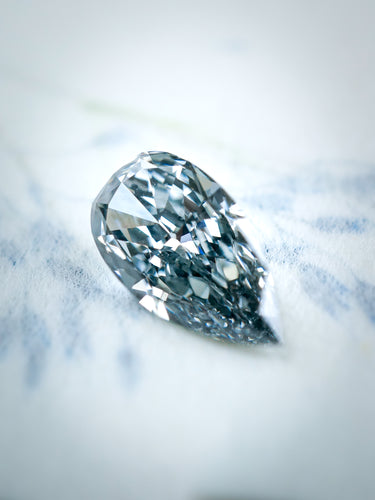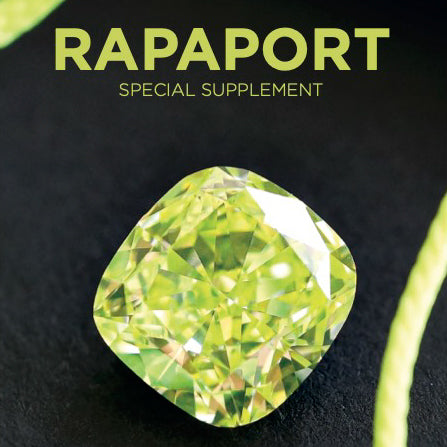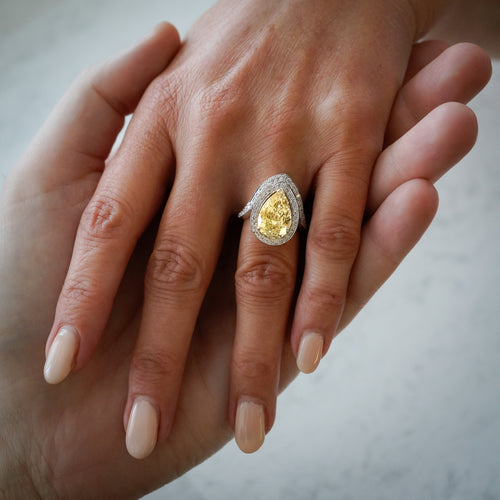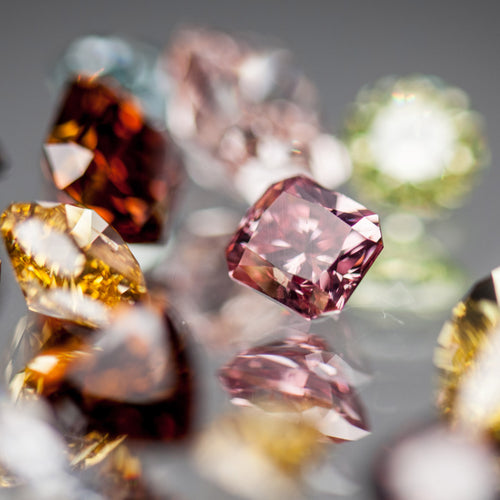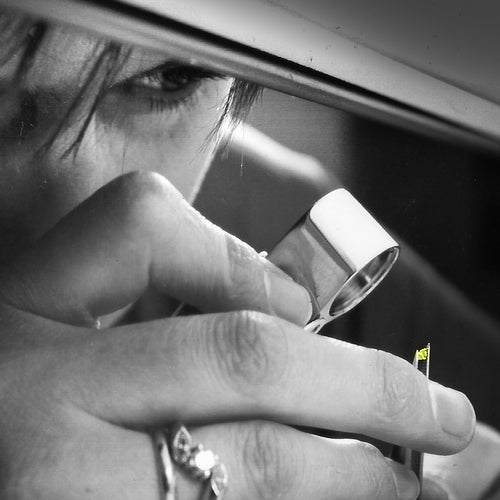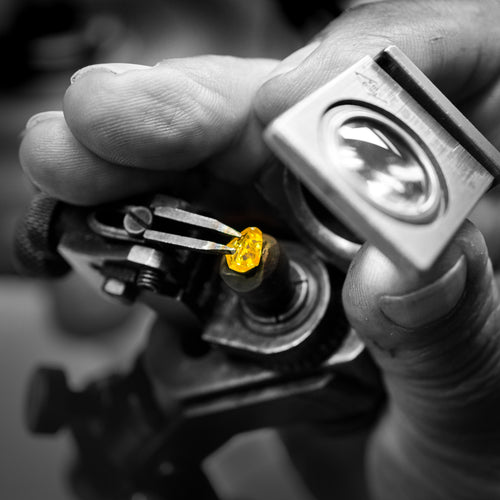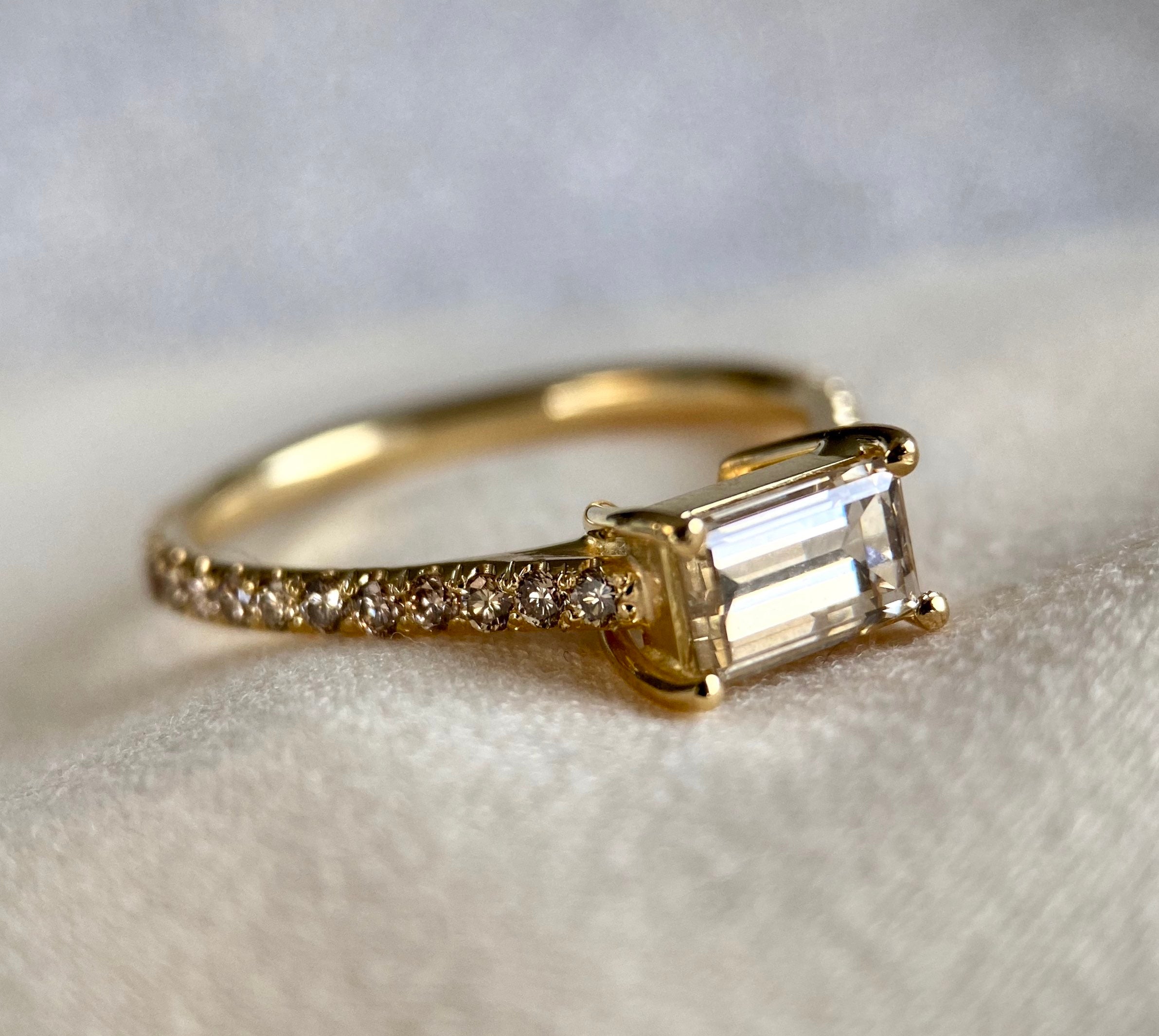




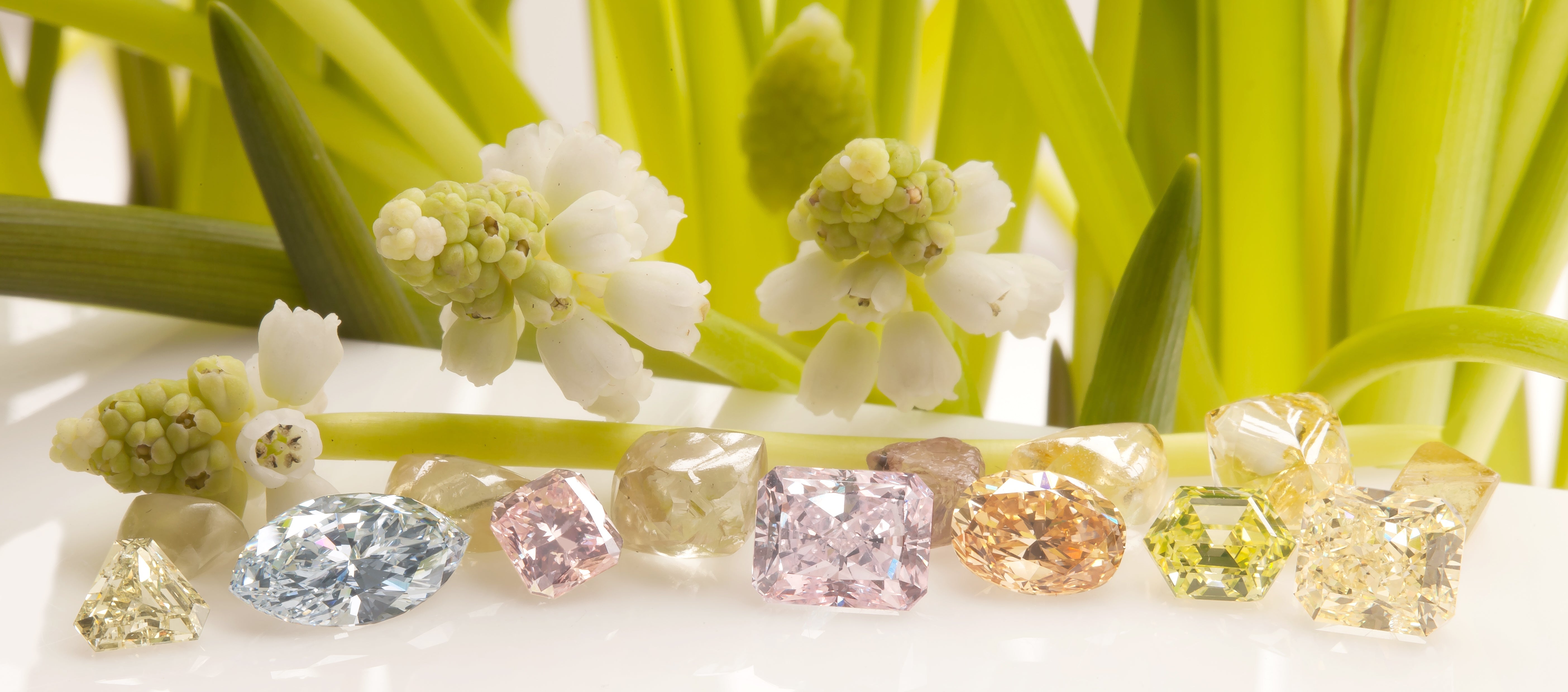
Your Guide to Step Cuts
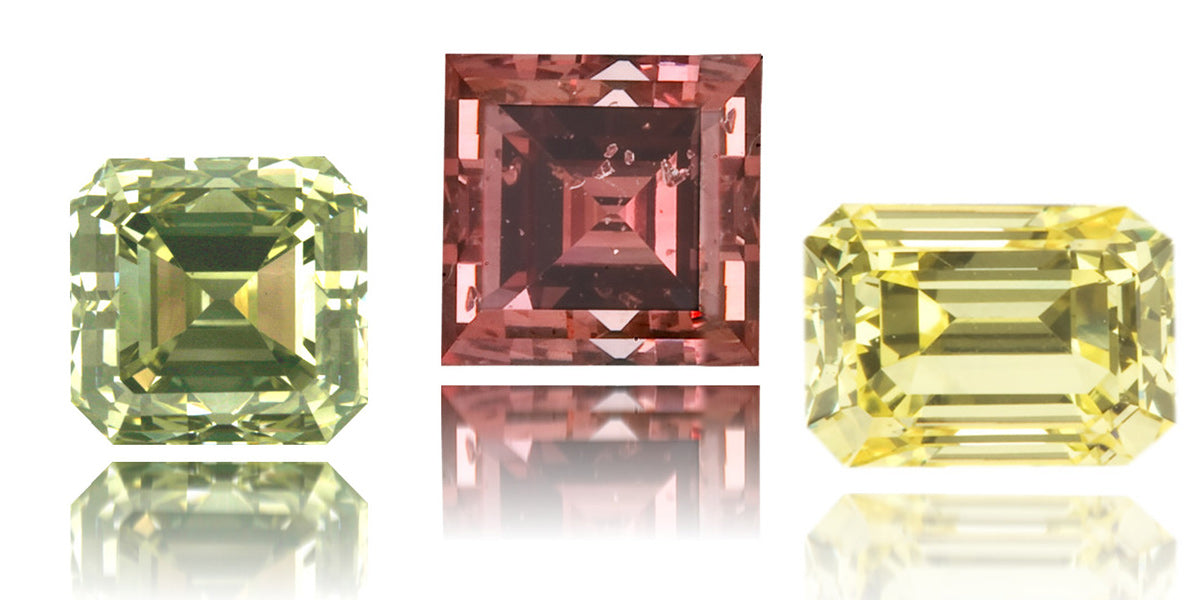
Brilliant cuts like the Round, the Oval, and the Pear, are coveted for their exceptional ability to sparkle. For colorless diamonds, brilliance is essential. But in the world of Fancy color diamonds, appreciating the natural hues of the stone is also a valued aspect.
The large tables and lengthy facets of Step-Cuts offer a clear view of the interior of the diamond. Their subtle sparkle is often described as elegant, and their timeless silhouettes are ideal for contemporary designs or Art Deco-inspired pieces.
On this blog, you’ll discover more about:
-
What Are Step-Cut Diamonds?
-
The Different Step-Cut Shapes
-
Unique Attributes of Step Cut Diamonds
What Are Step-Cut Diamonds?
Historical Diamond Cuts, Predating Modern Shapes.
Step-Cuts became popular in the 1920s during the Art Deco period when clean, streamlined shapes and symmetrical patterns were part of the era’s beauty canon. But their origin can be traced hundreds of years ago to the XV century when the ‘Table Cut’ was first developed, followed by the ‘Old Single Cut’—both considered predecessors of Step Cuts.
Just like the term ‘Brilliant’ describes multiple shapes, ‘Step-Cuts’ refers to a family of cuts that share the same base features. Step-cut diamonds are usually square or rectangular, with facets parallel to the table.
Their name makes reference to the similarity these shapes bear with a staircase.
Getting to Know Step Cuts
The Emerald Cut
Exceptional 2.25 ct Emerald Cut Champagne Diamond.
Perhaps the most popular among all Step Cuts, the Emerald cut was named after the stone. Cutters recognized it as an ideal shape to cut and polish emeralds. Emeralds are considered somewhat fragile and brittle, scoring 7.5-8 on the Mohs hardness scale. The octagonal shape ensures maximum yield and makes the gem more resistant to everyday wear and possible impacts.
In fancy color diamonds, the Emerald Cut also reduces rough carat weight loss and emphasizes the natural tones.
Natural Amber Color Square Emerald Cut Diamond.
This shape can have squared or rectangular proportions. Emerald cut diamonds can be set vertically or horizontally. The latter style is known as an East-West setting.
Fancy Burgundy Emerald Cut Diamond in East-West Setting Ring.
The Asscher Cut
Developed in 1902 by Joseph Asscher, the cut is similar to the Emerald shape. Its design has been improved over the years resulting in different versions such as the Royal Asscher, which bears 16 more facets than the Original Asscher.
Asscher cut diamonds follow an almost perfect squared ratio of 1:1-1.05 and feature wider cut corners than those in Emerald cuts.
Natural Yellow Asscher Cut Diamond Stud Earring from Langerman’s Bespoke Archives
Another unique feature that sets them apart from square Emerald cut diamonds, is their windmill effect. The facets coming from the corners lead to the cutlet, forming an X.
The Baguette Cut
Bespoke Brooch With Baguette Diamonds Tapered Swirl Detail.
Baguette cut diamonds have a rectangular shape with sharp corners. During the Art Deco era, they were used to create channel-set frames around a larger diamond.
Fancy Blue Tapered Baguette VVS2 Diamond.
The Tapered Baguette is a variation of the original shape where the longer sides taper inwards, forming a trapezoid. Typically found in smaller sizes, Tapered Baguette diamonds are popular as side stones as they visually guide focus to the center stone.
Creative Step-Cut Diamonds
At Langerman, we have a fascinating selection of unique, natural color Step Cut diamonds. Here are some of our favorites:
Honeycomb Diamond
This gorgeous stone weighs 3.50 ct and is a hexagonal, Step-Cut Honey color VVS1 diamond.
Pink Shield Diamond
This bold shape is recognized by GIA as a ‘Modified Shield Step Cut’ which incorporates some Brilliant features. The 1.01 ct Fancy Pink diamond was sourced from the renowned Argyle mines in Australia.
Raspberry Diamond
Another exceptional stone from Argyle, Australia. This 0.35 ct Raspberry Pink diamond was classified as a ‘Trapezoid Step Cut.’
Blue Kite Diamond
The bold shape of this icy Blue diamond is known as a ‘Kite Step Cut.’
What You Should Know About Step Cuts
1. They are known for their subtle sparkle
Step cut diamonds have fewer, larger facets than Brilliant Cuts, which is why they present less fire and scintillation. This is a natural characteristic of all Step Cuts. Although their spark is less dramatic, they are not dull by any means.
2. They Come In Unique Shapes
There’s more to Step Cut diamonds than Emerald and Asscher shapes. There’s a lot of variety within this family of shapes and their larger tables will definitely attract attention.
3. Clarity becomes more evident
The bigger facets of Step Cuts make inclusions easier to spot. People often invest in higher clarity grades when purchasing a Step cut diamond. However, beauty is in the eye of the beholder. The presence of impurities—or lack thereof—should be a matter of personal preference. After all, inclusions are a diamond’s fingerprint, a unique set of identifying characteristics.
4. Some Step cuts make fantastic sidestones
The slim, long shape of the Baguette cut makes them the perfect companion for a center stone. Tapered Baguettes are a popular option for accent diamonds.
—
Inspired to add Color Step Cut diamonds to your collection? Contact us, and we’ll help you find the ideal stones for your design.
